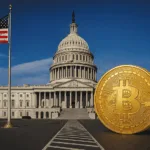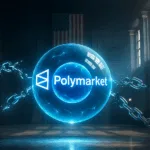At a time when the crypto markets continue to oscillate between euphoria and correction, Kevin Lee, Chief Business Officer as Gate, believes the next phase of digital finance lies in something more grounded – RWA tokenization.
Speaking to Coin Headlines on the the sidelines of the Expand North Star conference in Dubai, Lee described RWA Tokenization as “a great narrative” made possible by a maturing regulatory landscape and growing institutional appetite.
“Tokenization is a great narrative,” Lee said. “We already have the technology for a few years, but now the regulatory environment actually allows us to make this more mainstream with more appetite from institutional clients.”
Newsletter
Get weekly updates on the newest crypto stories, case studies and tips right in your mailbox.
RWA as a safe haven in volatile markets
When asked whether recent crypto market fluctuations could slow tokenization, Lee was clear: the opposite is true.
“It’s actually a positive impact,” he said. “People realize that the universe of investment instruments in crypto is very limited. Even Bitcoin is still high-risk, high-return.”
According to Lee, RWAs introduce a crucial layer of diversification.
“Tokenization provides a range of asset classes with different risk profiles,” he explained. “You don’t have to go into all these altcoins or stablecoins which don’t have any use or return.”
A bridge between markets, not a separate economy
When asked about the potential size of the tokenization market, Lee pushed back on attempts to quantify it in isolation.
“I don’t want to segregate a tokenized real-world asset from the actual real-world asset,” he said. “The underlying will be the same. Hopefully within a year or two, we don’t talk about market capitalization as separate and isolated. We want it to be combined and integrated with traditional finance.”
That integration, he suggests, will blur the line between what’s traded on Wall Street and what exists on blockchain ledgers, creating a single continuum of liquidity and access.
Tokenization can’t create demand
Lee was quick to distinguish between speculative tokenization experiments of the previous cycles and the more mature utility-driven adoption emerging now.
“Tokenization would create market access and liquidity because now you can buy a fraction of something in terms of tokens,” he explained. “The only thing it doesn’t create is demand.”
Using examples from previous cycles, Lee points out how tokenizing luxury watches or niche NFTs failed to sustain interest.
He believes this is the underlying challenge of demand. If you’re not interested in owning something, you won’t invest in it, which is why the current wave is focusing on traditional assets like stocks, bonds, real estate, and treasury yields.
“These historically have demand on the underlying, which makes adaptation much easier and increases overall demand in our space,” Lee said.
Regulation as a catalyst, not a constraint
For years, the question of whether a tokenized asset should be treated as a security has dominated the regulatory conversation. Lee believes the tone has shifted.
“More regulators have become friendly and adaptive,” he said. “They realize there’s a duality of properties within digital assets. They can be securities and can be something else. Now there are better frameworks to cater to all these scenarios, which is very welcoming for everyone in the space.”
Gate works on both infrastructure and integration
While Gate’s role isn’t to issue or tokenize assets directly, the exchange plays a crucial part in providing liquidity and infrastructure.
“We have great business partners doing the heavy lifting in regulation and infrastructure,” Lee said. “We’ll be the ones listing the tokens. What’s important is coherent integration across the ecosystem.”
He highlighted cross-collateralization where users can pledge cryptocurrency to gain exposure to other asset classes as a key innovation.
“You can pledge your cryptocurrency and now have exposure to other asset classes in this world,” he said. “That’s something banks and traditional finance haven’t figured out yet.”
UAE’s unique advantage
As far as Lee is concerned, the rise of the UAE in tokenization is neither unexpected nor a coincidence. The reasons behind this are many: forward-looking regulation, capital inflows, and geographic positioning between Asia and Europe. The UAE has now become the destination of choice for Web3 experimentation and adoption.
“The UAE always has advantages, not only in Asia but geographically between Asia and Europe,” he said. “It’s working a lot on digitization and starting from afresh. Only 20 years ago there was explosive growth, and that adaptability makes it one of the most suitable regions to start with.”
Lee contrasted this with jurisdictions weighed down by traditional financial frameworks that often resist rapid innovation.
“A lot of jurisdictions with a history of traditional finance have frameworks that may not be the most friendly to new technologies and ideas,” he noted. “The UAE is different. It’s adaptive, fast, and pragmatic.”
The only way is up
Lee remains convinced that tokenization isn’t just another crypto trend; it’s a structural evolution.
“It’s a very promising idea, and not just a narrative for this cycle,” he said. “There may be some overhype and then it will come down a little again, but the underlying is what matters. We’ve traded stocks for 200 years, that idea will stick with our industry.”
On his experience at Expand North Star, Lee reflected on how the UAE has become a second home in this new era of financial innovation. “Before I first came to Dubai before Token2049, I’d never been here. Since then, this is my sixth time,” he said with a laugh. “I think the UAE will continue to be a really important place for both traditional finance and crypto.”













